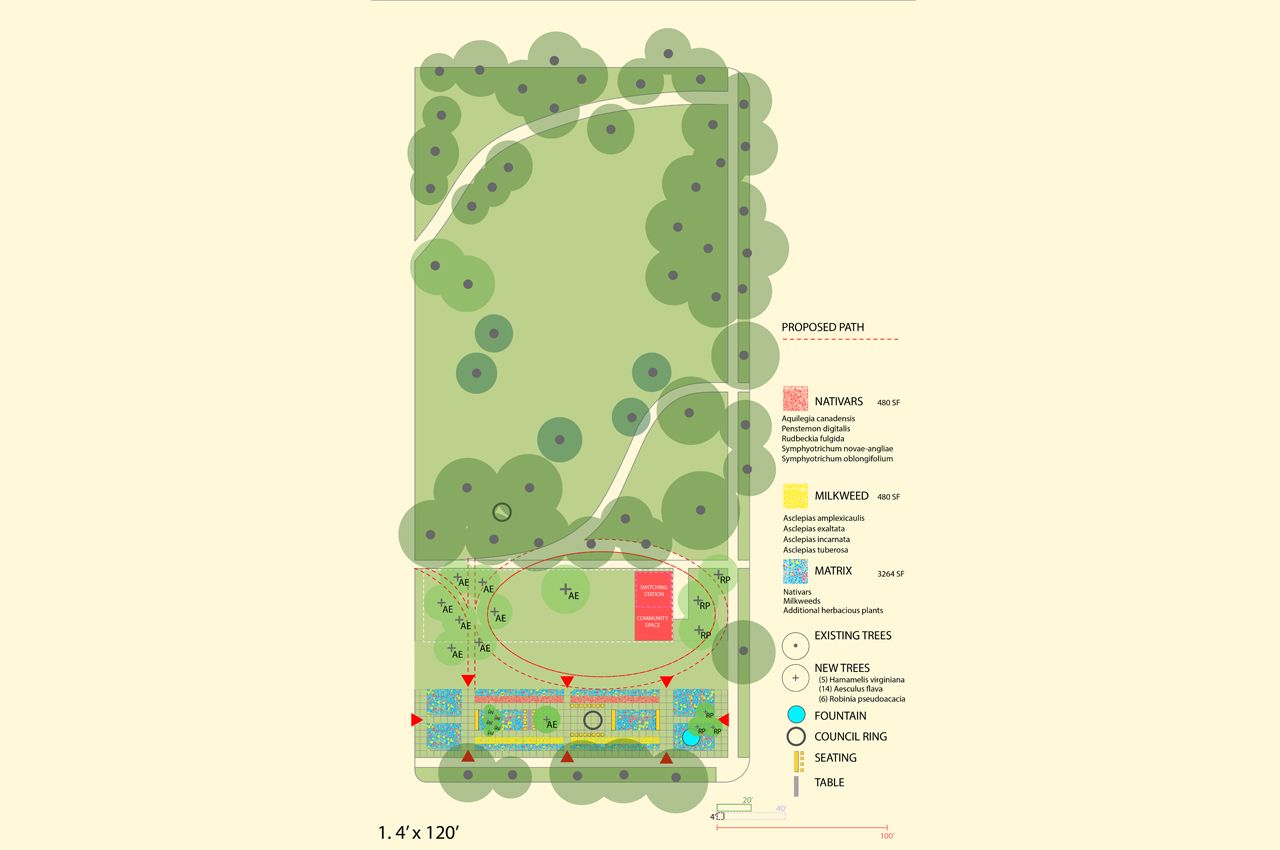Budburst Garden Aims to Plant New Community Roots
A new community garden at the corner of 33rd Street and Michigan Avenue will bring members of the Bronzeville community together with Illinois Tech students, faculty, and staff in a living lab.

Davey Friday knows every intersection in the historic Chicago neighborhood of Bronzeville like the back of his hand. But for the longtime resident and a fourth-year master’s degree student in the Illinois Institute of Technology’s College of Architecture, the southwest corner of 33rd Street and Michigan Avenue represents more than just the juncture of two streets—it’s the connection point between two communities.
In June the university and the Office of Community Affairs and Outreach Programs will open a community-based garden and ecological research center designed to bring together neighbors, students, researchers, educators, horticulturists, and community scientists as a part of the Budburst program. Budburst, an initiative of the Chicago Botanic Gardens, is a network of community gardens that have been established to answer specific, timely, and critical ecological research questions. More than just a neighborhood greenspace, Budburst is a living research program in which community members can use the free Budburst app to contribute valuable plant, animal, and geological data designed to illustrate the human impacts on the natural world.
“It’s about introducing communities to the biodiversity of the region that might be overlooked because of the landscape of the urban environment,” says Friday. “But more than that, it’s a really important nexus for Bronzeville and the Illinois Tech community. For many, this will be a porous moment where they feel comfortable puncturing that century-old wall, even if it’s invisible.”
The program, which took three years to develop, was initiated and led by Alicia Bunton, assistant vice president for community affairs at Illinois Tech. Friday, who is pursuing a dual master’s degree in architecture and landscape architecture, designed the garden alongside Ron Henderson, College of Architecture professor and director of the Landscape Architecture and Urbanism Program.
“To me, the most satisfying outcoming will be that Illinois Tech, as a research institution, will be able to establish a space where our expertise can inspire elementary school, middle school, and high school students throughout Bronzeville to get interested in botanical and ecological sciences,” says Henderson.
To date, more than 21,772 community participants have contributed more than 88,346 observations and data points across Budburst sites throughout the greater Chicago area. At the Illinois Tech site, the Budburst team hopes to collect vital information on the timing of seasonal changes in plants; evaluation of plants and pollinators; and restoration of habitats for monarch butterflies through the Milkweeds and Monarchs project.
“At the garden, folks will be able to participate in many different projects all in one space,” says Emma Oschrin, Budburst director. “There will be milkweed patches, which will bring in monarch butterflies, and community scientists can look for eggs and caterpillars. We will also have sections of the garden that have both native plants and cultivated varieties of native plants, called nativars. We know that pollinators may be visiting native plants and nativars at different rates and with this project, Nativars, you can help us better understand this phenomenon. And of course, you can look at any plant in the garden and document how it changes throughout the seasons—when does it get buds and flowers? When do you see ripe fruit? This important phenological data helps us better understand how plants are being impacted by climate change.”
At the groundbreaking in June, local students from three Chicago Public Schools will join Illinois Tech students, faculty, and staff for a day-long planting event, marking the official opening of the garden.
Once the garden is planted, members from across Bronzeville and Illinois Tech can come together as citizen scientists and help provide much-needed data to biological and ecological researchers. By snapping a photo from your phone using the Budburst app, community members submit their observations to Budburst’s international database, joining critical research on the impacts of climate change. Budburst organizers hope that the aggregate data will help researchers better understand how plants are changing all over the world.
But despite the global reach of the program, the garden will be rooted in a local focus.
"We can start to make those serendipitous moments when an Illinois Tech student is passing by Budburst and stops to enjoy it, and someone who lives in the building across the street is down in the space enjoying it, and so these natural human connections can sprout,” says Friday. “It can be a shared space where we can both exist together.”
In addition to being a living laboratory, the space also promises to be a living legacy for Friday and fellow Bronzeville landscape architects who have studied at Illinois Tech.
“I’m a Bronzeville resident. I live on 45th, and I’ve spent many a day walking by that very intersection,” he said. “And sure enough, I really did get to design a space for my neighborhood that is going to have some type of impact. That’s something I can take with me forever.”
Photo: A diagram for the plan of the Budburst community garden garden on the Illinois Tech campus (provided)




